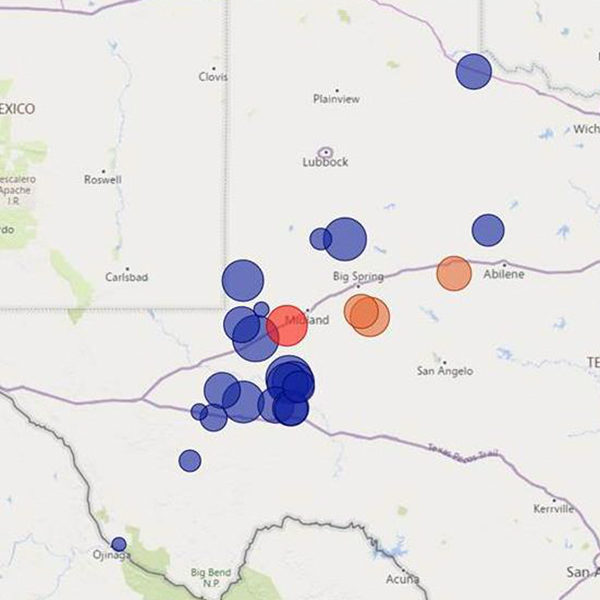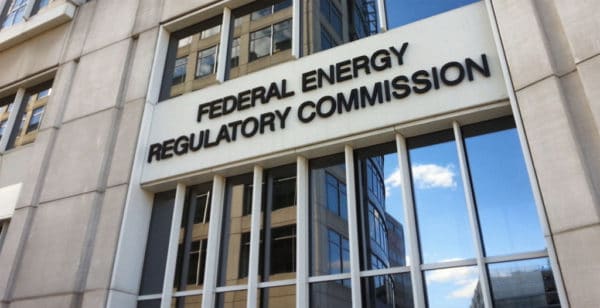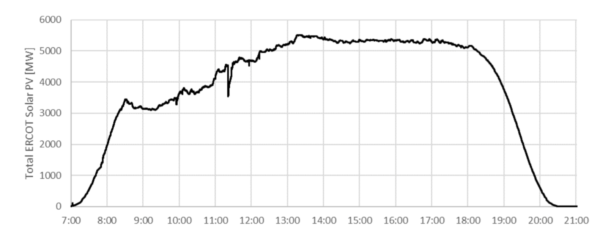On May 9, a single-line-to-ground fault on a generator step-up transformer at a combined-cycle power plant near Odessa, Texas, led to a reduction of more than 1,100 MW of solar PV resources up to 200 miles away.
Known as the “Odessa Disturbance,” the disruption was the first of its kind to hit solar resources in the Texas Interconnection. Similar incidents had affected solar facilities in California as far back as 2016.
More than 30 individual facilities in Texas experienced a change in active power output due to the fault. And while the Texas grid recovered quickly, the disturbance drew attention to what appears to be gaps in reliability standards that are impacting the performance of inverter-based energy resources.
A detailed root cause analysis was published in mid-September by the North American Electric Reliability Corp. (NERC) and the Texas Reliability Entity.
The report said that the scale of the Odessa incident highlighted the importance of ensuring that all grid-connected inverter-based resources operate in a way that ensures grid reliability. At the time of the event, the Electric Reliability Council of Texas (ERCOT) footprint included about 7,200 MW of solar PV resources with another roughly 790 MW in the commissioning process. By the end of August, that capacity had grown to 8,900 MW with another 1,000 MW in the commissioning process. Some 25,000 MW of solar PV resources have signed interconnection agreements in the ERCOT interconnection queue between now and 2023.
In its analysis, the report identified multiple issues at the inverter level during the Odessa Disturbance. It said that most of the plants involved were operating with equipment sourced from the four largest inverter manufacturers by ERCOT market share. The report did not name the suppliers.

Image: NERC
(Read “‘We have a real adversary’: Work intensifies to safeguard solar from cyber attacks.“)
During the disturbance, a condition known as phase lock loop (PLL) loss of synchronism occurred and was the largest factor behind the reduction of solar PV output. The report said that specific cause of the trip can be traced to one of the unidentified inverter manufacturers and has been noted in “multiple prior events” analyzed by NERC.
The report said the fault represented a “systemic concern” for facilities with this inverter type. It said that existing facilities are likely set in such a way that the inverters trip when their voltage phase angle experiences a shift during fault events (a 10 degree vector shift). When that occurs, the inverters issue a fault code and shut down.
The report said this trip function is separate from voltage-related tripping that is commonly referred to as “ride through settings.” In practice, a default 5-minute restart timer is initiated once the fault occurs and before the inverter is able to return to operation.
The report said that the equipment manufacturer stated that it was removing this trip function at existing facilities “only upon request” and was shipping newer inverters with the function disabled. The manufacturer also said that other protective functions in the inverter would protect it from conditions that might cause equipment damage. The manufacturer said that newer inverters were being shipped with a 5-second restart timer.
The report said this failure has led to gaps in performance from grid-connected inverter-based resources “across multiple footprints and Interconnections.”
‘No mitigating actions’ planned
In many cases, the solar industry “is not proactively identifying abnormal performance issues” of inverter-based resources, the report said. What’s more, solar power plants that were affected by the Odessa Disturbance indicated that “no mitigating actions are being done (or planned)” to address the performance issues.
The report said that all of the performance issues stemmed from a lack of specific requirements. In most cases, the affected facilities are performing unreliably, but that performance requirements are either unclear or nonexistent. What’s more, NERC guidelines that direct transmission operators to establish detailed performance requirements are not being implemented.

Image: Wikimedia Commons
The report urged the Federal Energy Regulatory Commission (FERC) to update interconnection agreements so that they include performance specifications covered in the NERC reliability guidelines. It said that such action by FERC would help ensure that no performance gaps exist for newly interconnecting resources.
Odessa incident timeline
At 11:21 a.m. Central time on May 9, a single-line-to-ground (Phase A) fault occurred on a generator step-up (GSU) transformer at a combined-cycle power plant near Odessa, Texas. The fault was caused by a failed surge arrester at the combustion turbine (CT) during startup for testing.

During the incident, the circuit breaker for CT1 operated and cleared the fault within three cycles. The #2 CT unit experienced a partial trip followed by a run back for a total loss of 192 MW. The report said the fault caused voltages in the area to drop to 0.72 pu at the 345 kV connecting station for the generation facility, 0.84 pu at a 138 kV station, and as low as 0.54 pu at a 69 kV bus near Alpine, Texas, around 140 miles away.

Image: Pixabay
The report said that voltage in the area recovered to near pre-disturbance levels within a couple of electrical cycles after the fault cleared. In addition to the generation loss at the combined cycle plant, a number of solar PV and wind plants connected to the grid also exhibited active power reductions caused by the fault. None of the affected inverter-based resources were tripped by the fault itself. Instead, “all reductions were due to inverter-level or feeder-level tripping or control system behavior within the resources.”
Just before the incident, wind and solar PV resources comprised 34% and 9% of the total generation, and solar was on its morning ramp up in production.
Ongoing issue
The report said that plant-level controller interactions with inverter response after-fault events continue to be an issue for bulk power system solar PV facilities. It said these two layers of controls “are not properly tuned with each other” and are resulting in “unreliable performance of these resources” once connected to the grid. It said that these interactions “are not properly being identified” in the interconnection study process.
The report said that solar PV plants continue to trip on phase lock loop (PLL) loss of synchronism, and these issues are not being properly mitigated. What’s more, transmission operators are not establishing interconnection requirements to prohibit plants from tripping on PLL loss of synchronism, a form of tripping that was the most significant cause of solar PV reduction in the Odessa Disturbance. This has led to unreliable performance of a number of large battery energy storage solar PV resources that lack sufficient ride-through capability to support the BPS for normal BPS fault events.
“This reliability issue is persistent,” the report said, and is “not being mitigated appropriately, and warrants mitigating actions to address.”
This content is protected by copyright and may not be reused. If you want to cooperate with us and would like to reuse some of our content, please contact: editors@pv-magazine.com.









Yeah, we’ve known about the stability issues that can arise once RE sources approach 20% of generation for a decade. In this case, RE intermittency didn’t cause the problem, but we do have a problem with mixing different sources of energy: “solar PV resources that lack sufficient ride-through capability to support the BPS for normal BPS fault events.”
What are we going to do, go back to Gen Sets?
I thought it was mainly an issue with the algorithm used by the inverters, resulting in the two layers of controls being “not properly tuned with each other” and they would correct it by changing the algorithm. Of course Texas is the biggest and the best at everything which is why they don’t have interconnection agreements with other states. Don’t Mess With Texas. LOL